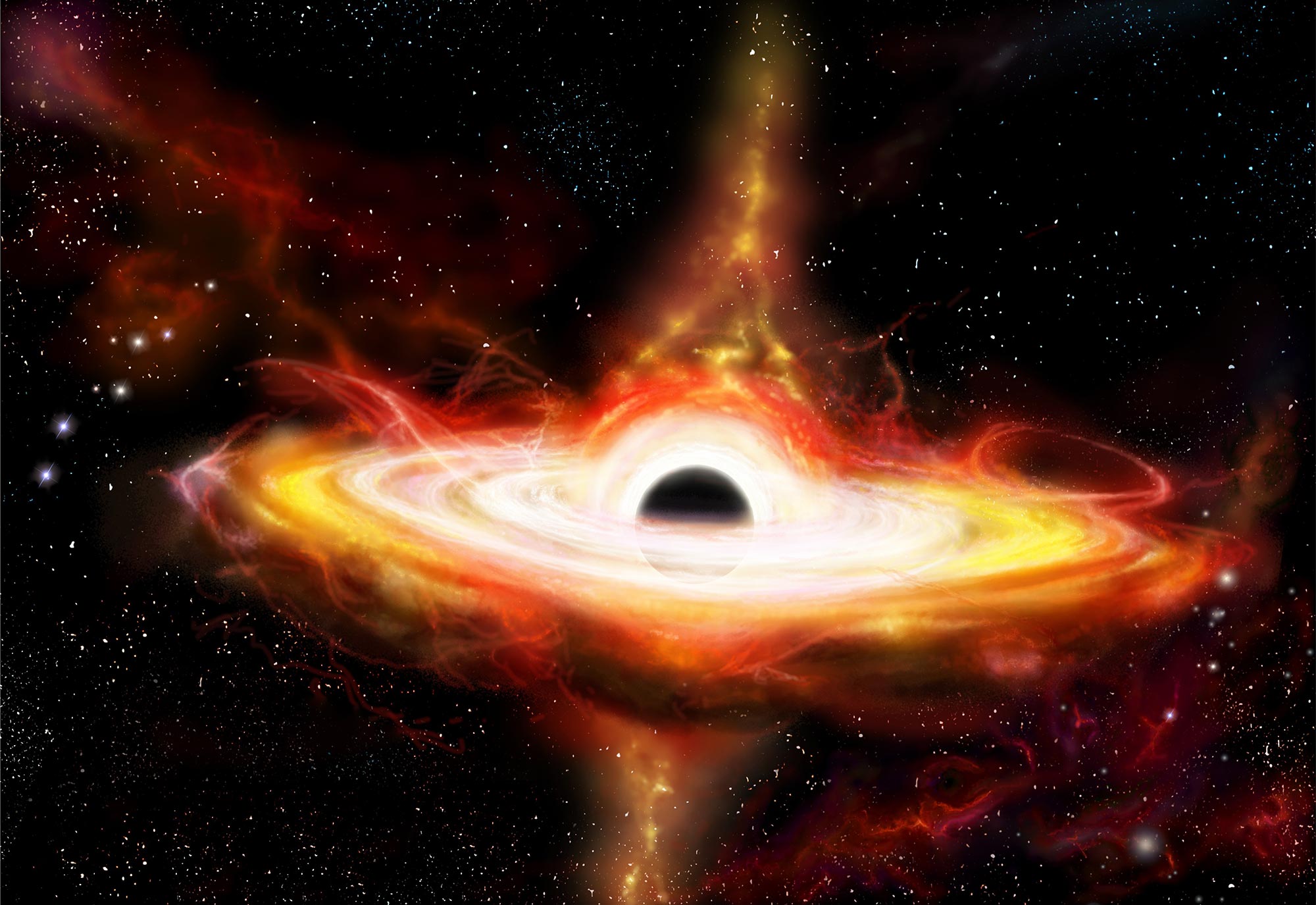
Astronomowie pod kierunkiem Durham University odkryli jedną z największych czarnych dziur, jakie kiedykolwiek odkryto, o masie ponad 30 miliardów razy większej od Słońca, dzięki zastosowaniu soczewkowania grawitacyjnego i symulacji superkomputera w obiekcie DiRAC HPC. Ta przełomowa technologia, która symuluje podróż światła przez wszechświat, pozwoliła naukowcom dokładnie przewidzieć ścieżkę światła widzianą na rzeczywistych zdjęciach z Kosmicznego Teleskopu Hubble’a. Odkrycie zostało opublikowane w Miesięczne zawiadomienia Królewskiego Towarzystwa Astronomicznego.
Zespół astronomów odkrył jedną z największych czarnych dziur, jakie kiedykolwiek odkryto, wykorzystując zjawisko zwane soczewkowaniem grawitacyjnym.
Krzywoliniowa grawitacja światła
Zespół kierowany przez Durham University w Wielkiej Brytanii wykorzystał soczewkowanie grawitacyjne – gdzie galaktyka na pierwszym planie zakrzywia i powiększa światło odległego obiektu – a symulacje superkomputerów w obiekcie DiRAC HPC umożliwiły zespołowi dokładne zbadanie, w jaki sposób światło jest zakrzywiane przez czarną dziurę wewnątrz galaktyki oddalonej o setki mil, miliony lat świetlnych od Ziemi.
Zespół symulował podróżowanie światła przez wszechświat setki tysięcy razy, przy czym każda symulacja obejmowała inną masę[{” attribute=””>black hole, changing light’s journey to Earth.

An artist’s impression of a black hole, where the black hole’s intense gravitational field distorts the space around it. This warps images of background light, lined up almost directly behind it, into distinct circular rings. This gravitational “lensing” effect offers an observation method to infer the presence of black holes and measure their mass, based on how significant the light bending is. The Hubble Space Telescope targets distant galaxies whose light passes very close to the centers of intervening fore-ground galaxies, which are expected to host supermassive black holes over a billion times the mass of the sun. Credit: ESA/Hubble, Digitized Sky Survey, Nick Risinger (skysurvey.org), N. Bartmann
30 billion times the mass of our Sun
When the researchers included an ultramassive black hole in one of their simulations, the path taken by the light from the faraway galaxy to reach Earth matched the path seen in real images captured by the Hubble Space Telescope.
What the team had found was an ultramassive black hole, an object over 30 billion times the mass of our Sun, in the foreground galaxy – a scale rarely seen by astronomers.
This is the first black hole found using gravitational lensing and the findings were published today (March 29) in the journal Monthly Notices of the Royal Astronomical Society.
Film pokazujący, jak astronomowie wykorzystali soczewkowanie grawitacyjne do odkrycia czarnej dziury o masie 30 miliardów mas Słońca w galaktyce oddalonej o 2 miliardy lat świetlnych. Źródło: Uniwersytet w Durham
Patrząc wstecz w kosmicznym czasie
Większość największych znanych nam czarnych dziur znajduje się w stanie aktywnym, ponieważ materia przyciągana w pobliżu czarnej dziury nagrzewa się i uwalnia energię w postaci światła, promieniowania rentgenowskiego i innego promieniowania.
Soczewkowanie grawitacyjne umożliwia badanie nieaktywnych czarnych dziur, co obecnie nie jest możliwe w odległych galaktykach. Takie podejście może pozwolić astronomom wykryć nieaktywne czarne dziury, które są masywniejsze niż wcześniej sądzono, i zbadać, w jaki sposób stają się tak masywne.
Historia tego odkrycia rozpoczęła się w 2004 roku, kiedy inny astronom z Durham University, profesor Alastair Edge, zauważył gigantyczny łuk soczewki grawitacyjnej podczas przeglądania zdjęć SGS.
Przewiń do przodu o 19 lat i przy pomocy kilku zdjęć w bardzo wysokiej rozdzielczości z[{” attribute=””>NASA’s Hubble telescope and the DiRAC COSMA8 supercomputer facilities at Durham University, Dr. Nightingale and his team were able to revisit this and explore it further.
Exploring the mysteries of black holes
The team hopes that this is the first step in enabling a deeper exploration of the mysteries of black holes, and that future large-scale telescopes will help astronomers study even more distant black holes to learn more about their size and scale.
Reference: “Abell 1201: detection of an ultramassive black hole in a strong gravitational lens” by J W Nightingale, Russell J Smith, Qiuhan He, Conor M O’Riordan, Jacob A Kegerreis, Aristeidis Amvrosiadis, Alastair C Edge, Amy Etherington, Richard G Hayes, Ash Kelly, John R Lucey and Richard J Massey, 29 March 2023, Monthly Notices of the Royal Astronomical Society.
DOI: 10.1093/mnras/stad587
The research was supported by the UK Space Agency, the Royal Society, the Science and Technology Facilities Council (STFC), part of UK Research and Innovation (UKRI), and the European Research Council.
This work used both the DiRAC Data Intensive Service (CSD3) and the DiRAC Memory Intensive Service (COSMA8), hosted by University of Cambridge and Durham University on behalf of the DiRAC High-Performance Computing facility.

„Amatorski przedsiębiorca. Profesjonalny ekspert od internetu. Człowiek zombie. Nieuleczalny badacz popkultury”.
